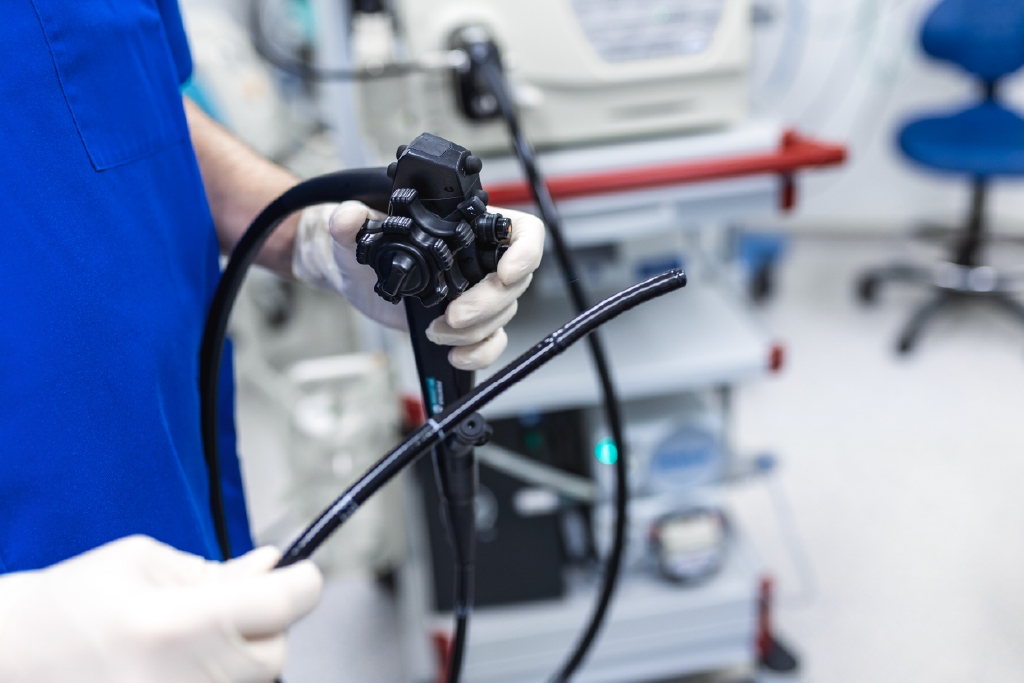
Endoscopic Submucosal Dissection
Table of Contents:
- Who May Need Endoscopic Submucosal Dissection
- Before Endoscopic Submucosal Dissection
- During Endoscopic Submucosal Dissection
- Recovery After Endoscopic Submucosal Dissection
- Advantages of Endoscopic Submucosal Dissection
- Side Effects of Endoscopic Submucosal Dissection
- Difference Between Endoscopic Mucosal Resection (EMR) and Dissection (ESD)
Advancements in medical technology have revolutionized the treatment landscape for gastrointestinal conditions. One such breakthrough procedure, Endoscopic Submucosal Dissection (ESD), has garnered attention for its minimally invasive approach and efficacy in treating early-stage gastrointestinal tumors. Our specialists at SRM Global Hospitals provide comprehensive services
Who May Need Endoscopic Submucosal Dissection?
Individuals diagnosed with early-stage gastrointestinal tumors, precancerous lesions, or localized abnormalities within the gastrointestinal tract may be candidates for ESD. Patients who cannot undergo surgery due to underlying health conditions or those seeking less invasive treatment options often opt for ESD. Various conditions, including Barrett’s esophagus, early-stage cancerous tumors or colon polyps, and tumors of the esophagus, stomach, or colon, may be treated using the ESD procedure. At SRM Global Hospitals, we have the best gastro doctor for all your gastro issues.
Before Endoscopic Submucosal Dissection
Before the procedure, patients undergo thorough assessments, including a medical history review, physical examination, and possibly imaging studies. Fasting is required for a few hours before the surgery, and bowel preparation may be necessary to ensure clear visibility during the procedure.
During Endoscopic Submucosal Dissection
The ESD technique involves inserting an endoscope through the mouth or anus, depending on the location of the abnormality. The endoscope is used to mark the lesion’s boundaries, inject a solution to reduce injury to surrounding tissues, and precisely dissect and remove the targeted tissue. The procedure, lasting one to three hours, is monitored to prevent complications. Experts at SRM Global Hospitals – the top gastro hospital are the best choice for all your gatsro treatment needs.
Recovery After Endoscopic Submucosal Dissection
Patients are monitored post-ESD for any complications. Recovery involves a liquid diet initially, transitioning to soft foods. Medications may be prescribed for healing and preventing complications. Follow-up endoscopies are scheduled, and patients are advised to refrain from certain activities, including using heavy machinery and engaging in attentive tasks, especially under intravenous sedation.
Advantages of Endoscopic Submucosal Dissection
ESD offers significant benefits, such as being less invasive than traditional surgery, precise dissection for complete removal of larger lesions, maintenance of organ functionality, and lower risks of complications, promoting faster recovery for patients.
Side Effects of Endoscopic Submucosal Dissection
While generally considered safe, potential side effects include bleeding, perforation of the gastrointestinal tract, discomfort, infection, and scarring leading to strictures. Rare complications may include allergic reactions and adverse reactions to medications used during the procedure.
Difference Between Endoscopic Mucosal Resection (EMR) and Dissection (ESD)
EMR and ESD are both minimally invasive procedures for removing abnormal tissues. EMR is effective for most precancerous lesions but may have a higher recurrence rate. ESD allows thorough dissection of lesions of any size but requires advanced endoscopic expertise and has a higher perforation rate. ESD offers efficient treatment for early-stage gastrointestinal lesions, reducing the need for intrusive surgeries as technology advances.
In conclusion, Endoscopic Submucosal Dissection is a remarkable advancement in gastrointestinal treatment, providing a less invasive and effective solution for early-stage tumors and abnormalities. For the best outcomes, patients are encouraged to consult with the leading gastro doctors at SRM Global Hospitals, known for their expertise in advanced procedures like ESD. These top gastro doctors work in conjunction with the cutting-edge facilities of SRM Global Hospitals, making it one of the best gastro hospitals globally. Patients should consult with their healthcare providers, ensuring they receive the most suitable treatment based on their individual health conditions and needs.

